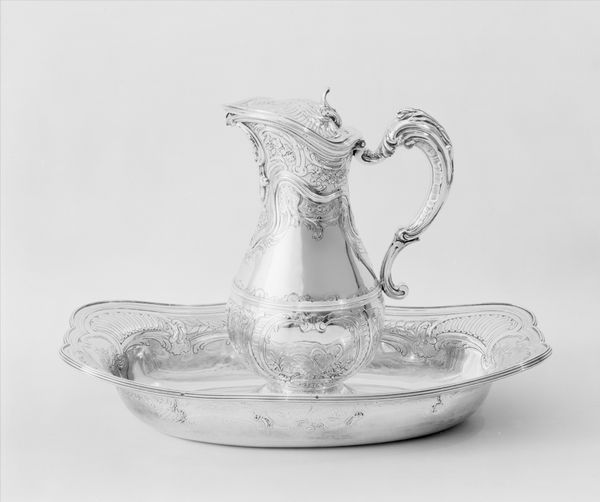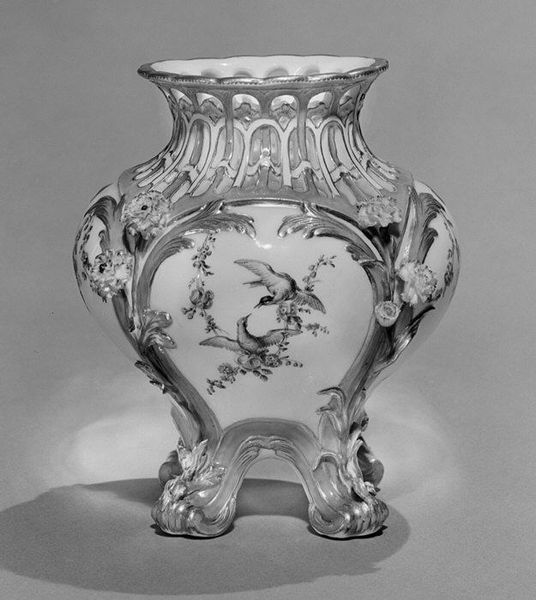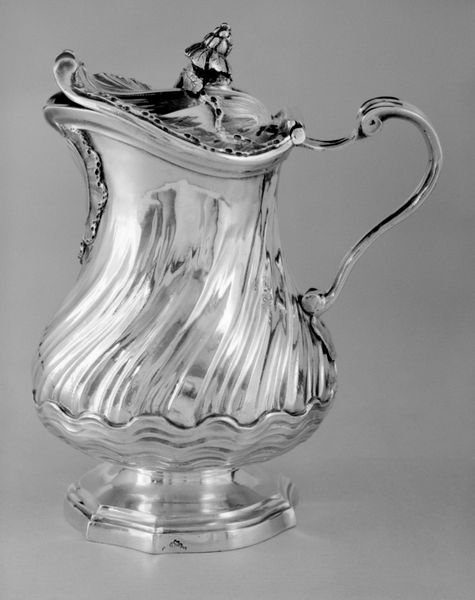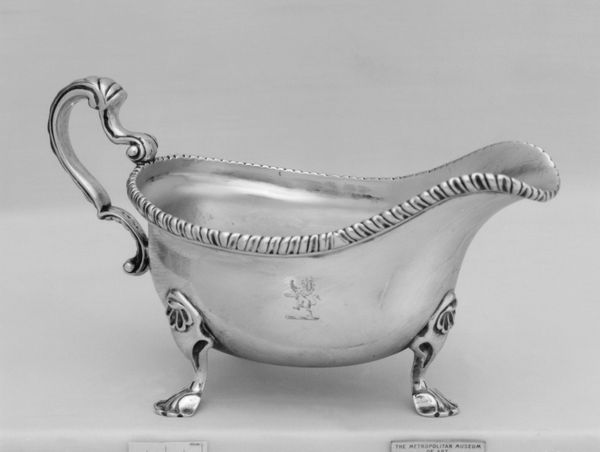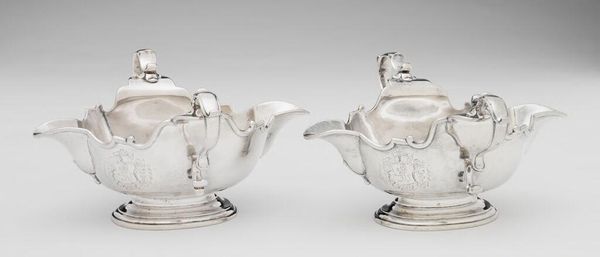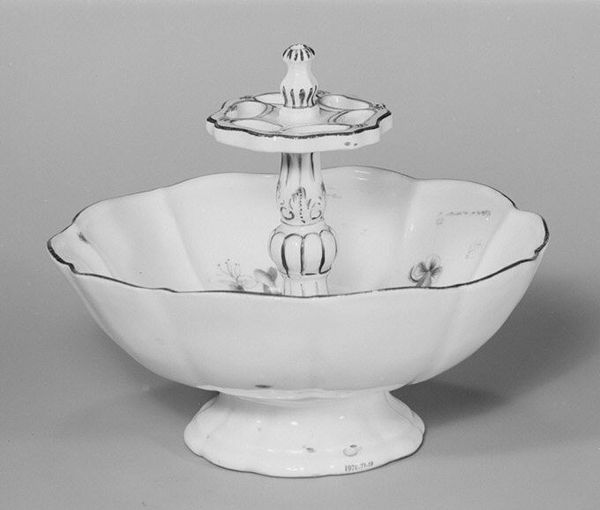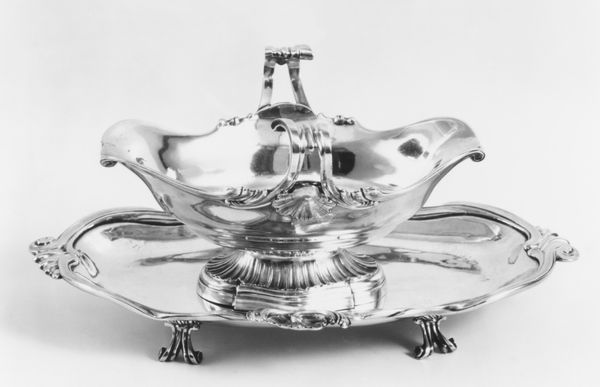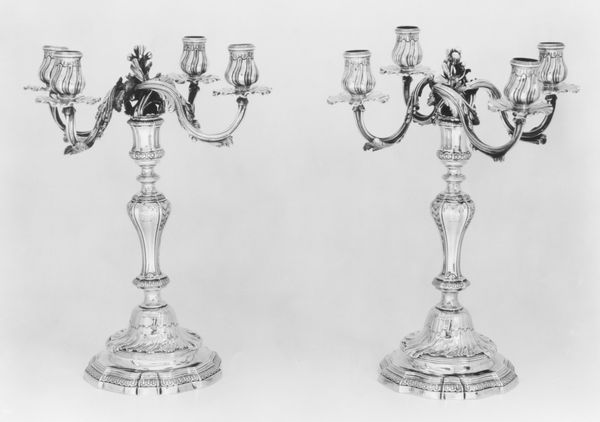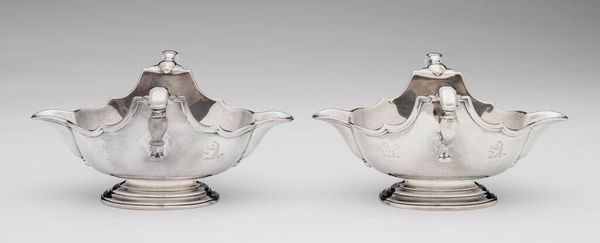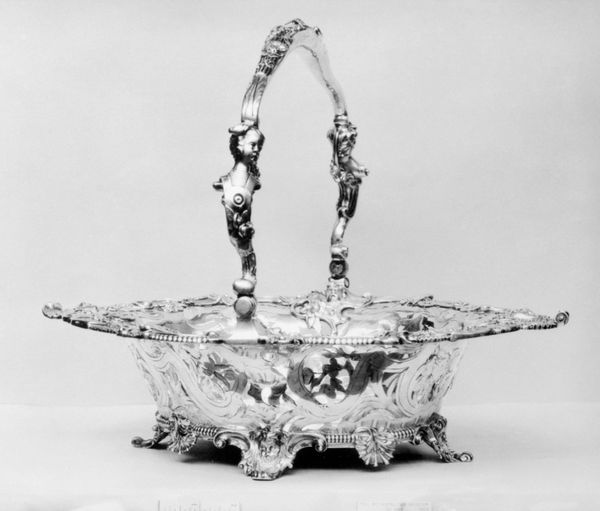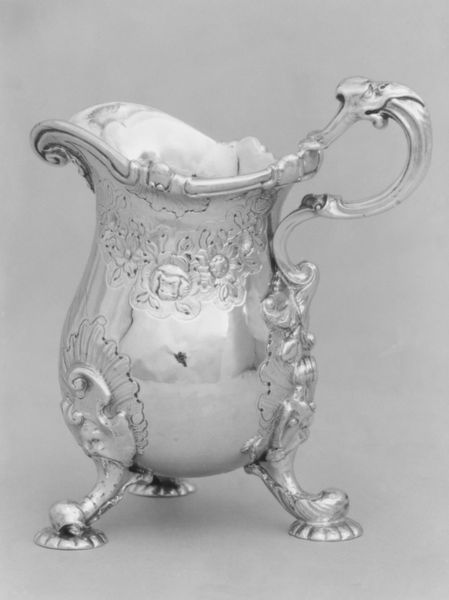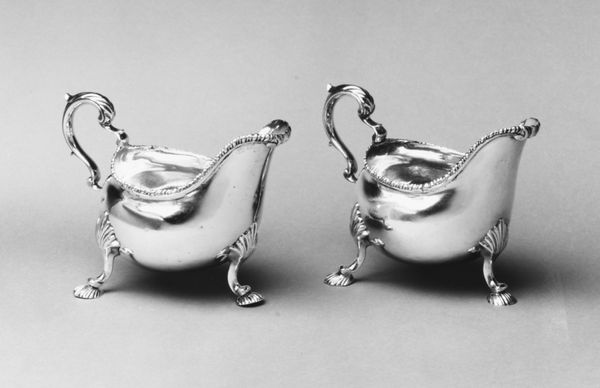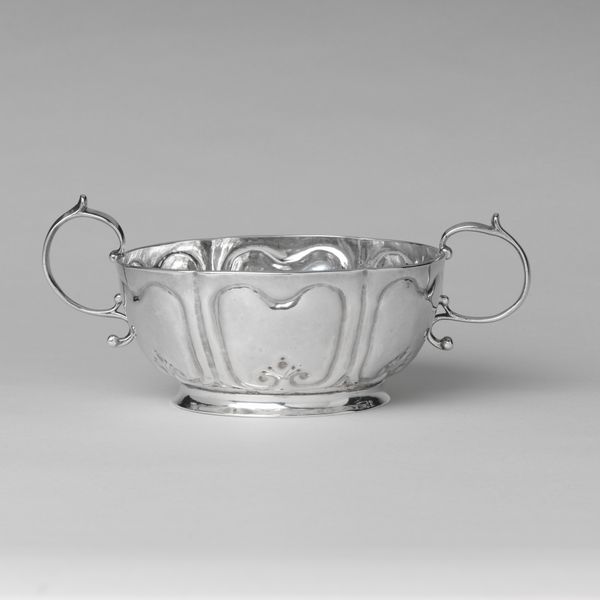
ceramic, porcelain, sculpture
#
sculpture
#
ceramic
#
porcelain
#
sculpture
#
decorative-art
#
rococo
Dimensions: 5 1/2 × 8 1/2 in. (14 × 21.6 cm)
Copyright: Public Domain
Editor: This is a porcelain chamber candlestick, crafted by the Meissen Manufactory between 1760 and 1770. I'm struck by the ornate details and flowing lines. It's so intricate; how do you even begin to approach something like this? Curator: Observe how the piece establishes an inherent visual hierarchy, placing functional elements such as candle holders at the apex of swirling, almost organic forms. The eye is led upwards and outwards. Have you considered the compositional use of asymmetry? Editor: You're right, the asymmetry does create movement. But I wonder about the base, does it support or detract from the dynamism? Curator: Note the integration of the base and handle. See how they mimic the curvilinear nature of the upward sweeping candle arms, creating structural harmony. It’s Rococo excess, yet expertly balanced. How does the surface decoration interact with this balance? Editor: The painted details highlight the curves and contribute to that sense of movement, I see the emphasis on the S-curve. Without it, it feels like it could fall apart. It’s all so delicate and precise! Curator: Exactly. The subtle play of light across the porcelain is deliberately crafted, exploiting the materiality of the medium to enhance its three-dimensionality. This object becomes an exploration of line, form, and light, functioning as a decorative object while demanding contemplation of its formal arrangement. Editor: It’s more than just something pretty to look at. It uses shape and line to make a much more complex artistic statement. Thanks! Curator: Indeed, by focusing on the structural and material aspects, we gain a deeper understanding of the artistry involved.
Comments
No comments
Be the first to comment and join the conversation on the ultimate creative platform.
